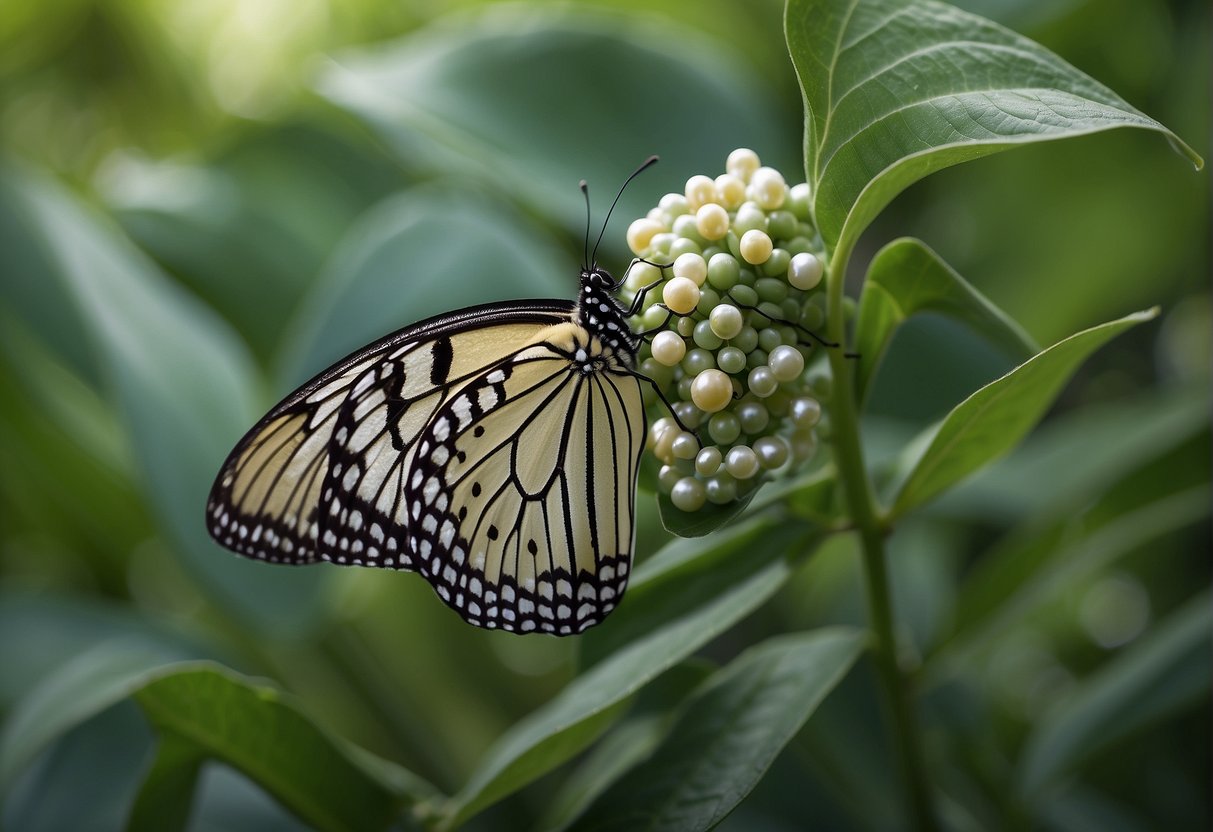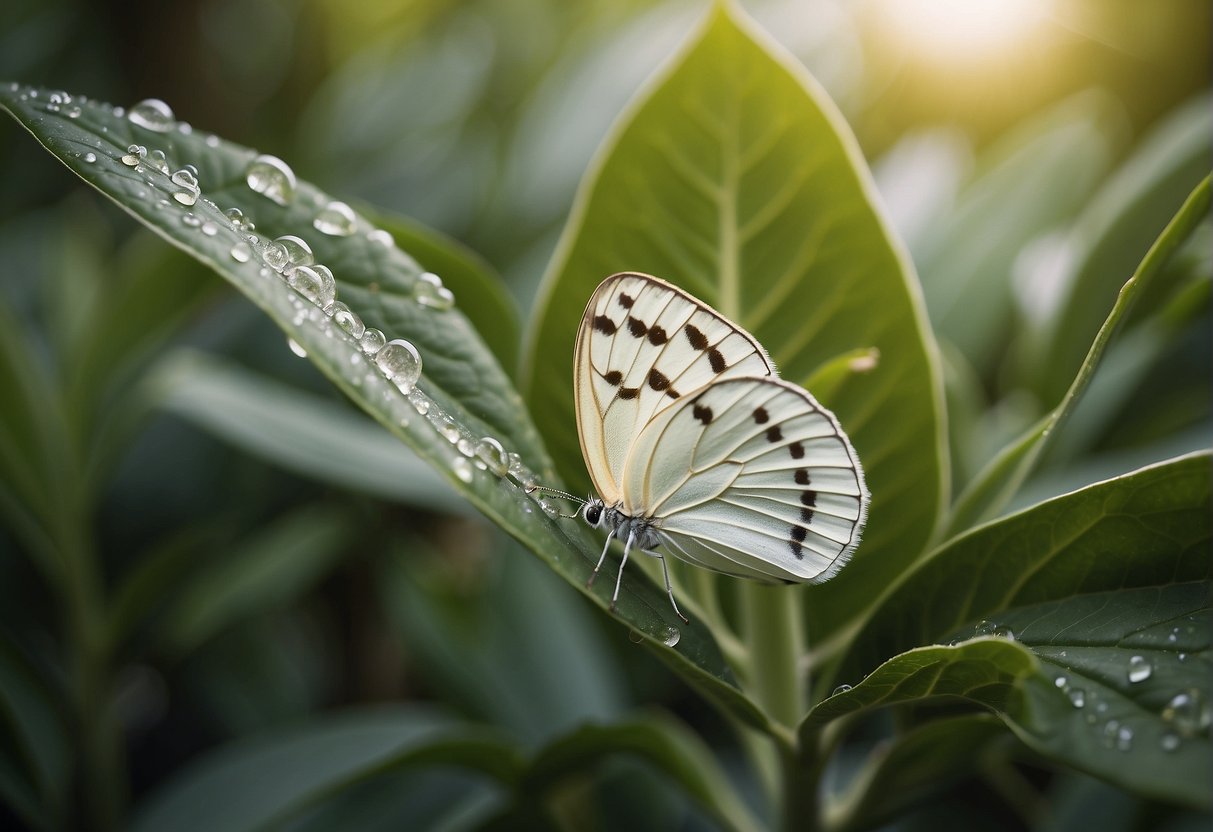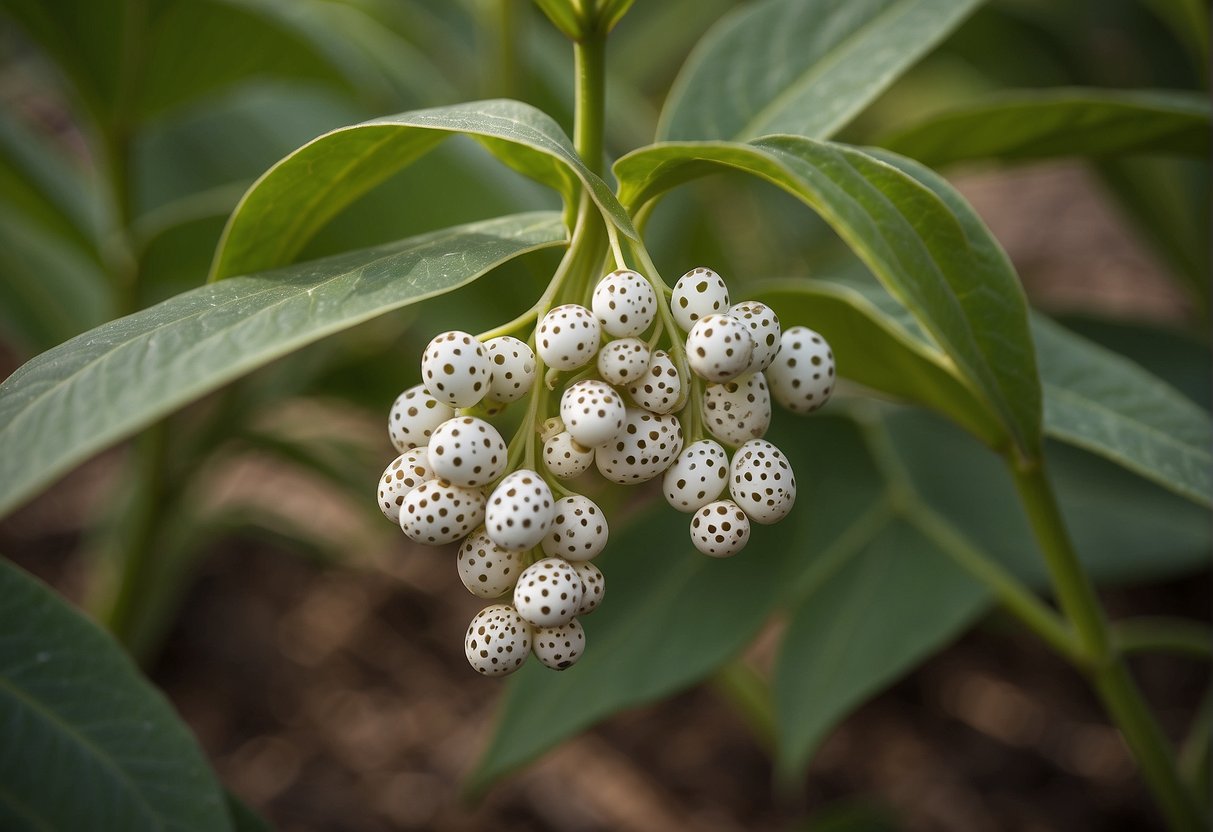Are you crazy about nature or just want to dive deep into the world of butterflies? Ever thought about how monarch butterfly eggs look nestled on milkweed? Well, milkweed isn’t just any plant; it’s the go-to spot for these fluttering beauties to lay their eggs. Getting to know the appearance of these tiny wonders turns into an engaging and enlightening journey.

Identifying butterfly eggs on milkweed may seem like a daunting task, but with a little knowledge, it can be quite simple. Butterfly eggs are typically small and round, with a smooth surface that can be shiny or matte. Monarch butterfly eggs are usually a pale yellow color, while other butterfly species may lay eggs that are white, green, or even brown.
Learning about butterfly eggs can also provide insight into the lifecycle and significance of monarch butterflies. Understanding the different stages of a butterfly’s life can help you appreciate their beauty and importance in the ecosystem. So, let’s dive in and explore what butterfly eggs look like on milkweed.
Key Takeaways
- Butterfly eggs on milkweed are typically small, round, and have a smooth surface.
- Monarch butterfly eggs are usually pale yellow in color.
- Understanding butterfly eggs can provide insight into the lifecycle and significance of monarch butterflies.
Identifying Butterfly Eggs on Milkweed
If you are interested in observing butterfly life cycles, it is important to know how to identify butterfly eggs on milkweed. Here are some tips to help you recognize monarch butterfly eggs on milkweed.
Physical Characteristics of Monarch Eggs
Monarch butterfly eggs are tiny, about the size of a pinhead, and are usually round or oval in shape. They are typically pale green or white in color and have a smooth texture. The eggs are laid singly on the underside of milkweed leaves, often near the top of the plant.
To get a better look at the eggs, you may need to use a magnifying glass. When viewed up close, monarch butterfly eggs have a distinct pattern of ridges and valleys on their surface, known as the chorion. This pattern helps to protect the egg and allows it to breathe.
Egg Laying and Location on Milkweed
Monarch butterflies lay their eggs exclusively on milkweed plants, which serve as the sole food source for their larvae. The female butterfly will carefully select a milkweed leaf and use her ovipositor to deposit a single egg on the underside of the leaf.
It is important to note that monarch butterfly eggs are often laid on the newest and freshest milkweed leaves, as these leaves provide the best nutrition for the developing larvae. As the larvae grow, they will consume the milkweed leaves and eventually form a chrysalis to complete their metamorphosis.
By learning to identify monarch butterfly eggs on milkweed, you can better understand the life cycle of these fascinating insects and help to support their conservation efforts.
The Lifecycle and Significance of Monarch Eggs

Monarch butterflies are one of the most recognizable and beloved insects in North America. Their life cycle is fascinating and intricate, and the eggs they lay on milkweed plants are no exception. Understanding the lifecycle and significance of monarch eggs is crucial for anyone interested in butterfly gardening or conservation.
From Egg to Caterpillar
Monarch eggs are small, about the size of a pinhead, and are typically laid on the underside of milkweed leaves. The eggs are pale green or yellow and have a ridged surface. After about four days, the eggs hatch into tiny caterpillars, or larvae. The larvae feed voraciously on the milkweed leaves and grow rapidly, shedding their skin several times as they develop.
Environmental Factors Affecting Eggs
Several environmental factors can affect the development of monarch eggs. Temperature and humidity can impact hatching time, and extreme temperatures can be fatal to developing eggs and larvae. Parasites and predators can also pose a threat to monarch eggs and caterpillars, as can changes in the availability of milkweed plants, which are the only host plant for monarchs.
Overall, understanding the lifecycle and significance of monarch eggs is crucial for anyone interested in butterfly gardening or conservation. By providing a habitat with plenty of milkweed and nectar plants, you can help support the development of monarch eggs and caterpillars, ensuring the continued survival of this iconic species.
Frequently Asked Questions

How can you identify monarch butterfly eggs on milkweed?
Monarch butterfly eggs are small, about the size of a pinhead, and are usually laid singly on the underside of milkweed leaves. They are white to cream-colored and have a round shape with a slightly flattened top. They may be difficult to spot at first, but once you know what to look for, they are easily recognizable.
What characteristics distinguish monarch eggs from other eggs on milkweed?
Monarch butterfly eggs can be distinguished from other eggs on milkweed by their size, shape, and color. They are smaller and rounder than other eggs, and their color is usually white to cream-colored. Other eggs on milkweed may be larger, have a different shape, or be a different color.
During what part of the year are monarch eggs typically found on milkweed?
Monarch butterfly eggs are typically found on milkweed during the summer months, from June to August. This is when monarch butterflies are most active and laying eggs.
How does the appearance of monarch eggs differ from yellow eggs found on milkweed?
Yellow eggs found on milkweed may belong to other species of butterflies or moths. These eggs are usually larger and have a different shape than monarch butterfly eggs. They may also be a different color, such as yellow or orange.
What other species lay eggs on milkweed apart from monarch butterflies?
In addition to monarch butterflies, other species of butterflies and moths may lay eggs on milkweed. These include the queen butterfly, the viceroy butterfly, and the milkweed tussock moth.
Approximately how many eggs do monarch butterflies lay on milkweed at one time?
Monarch butterflies typically lay one egg at a time on milkweed, but they may lay up to 400 eggs over the course of their lifetime. The number of eggs laid at one time depends on factors such as the availability of milkweed and the health of the female butterfly.














